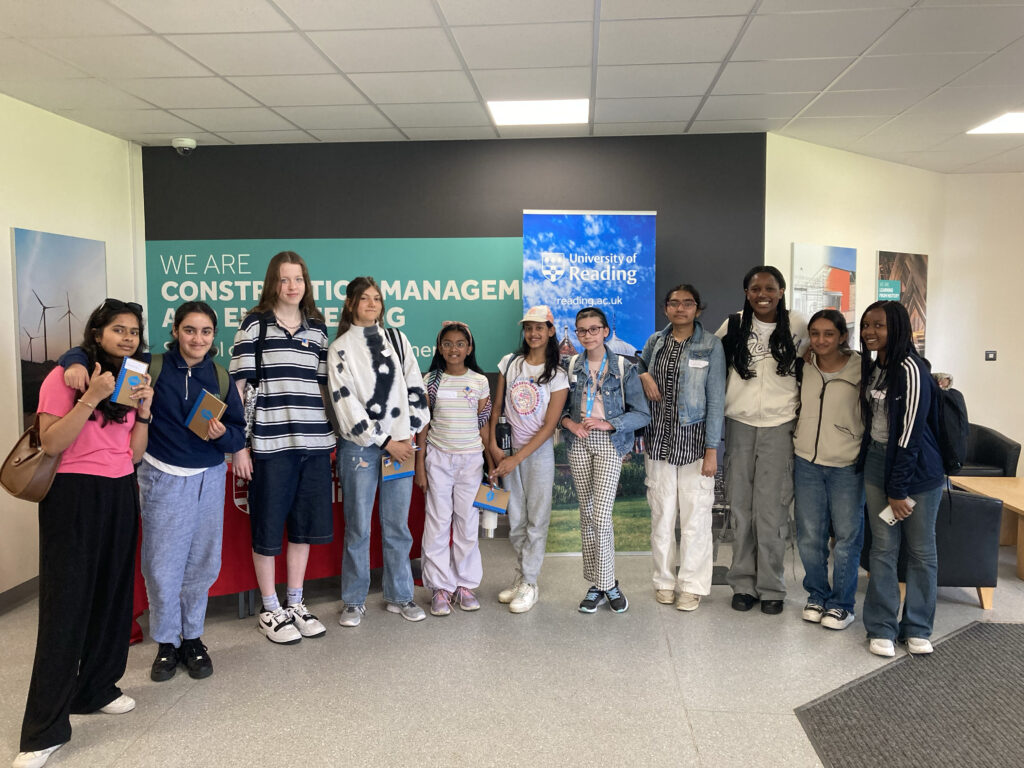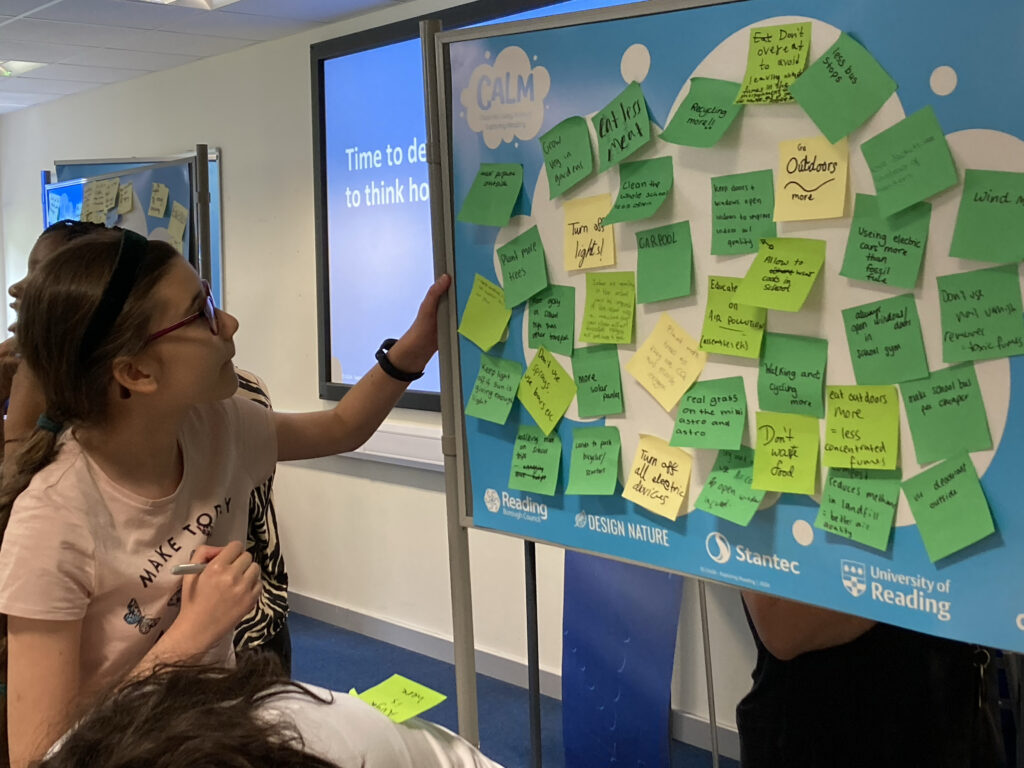
On Thursday 20 June a group of eco reps and prefects visited Reading University to participate in the CALM (Clean Air Living Matters) workshop in cooperation with Stantec, Design Nature, Reading Borough Council and Defra. Over a hundred students took part in the workshop with representatives from other local secondary schools. Students had the opportunity to discuss how air quality can be improved and how it is coursed.
We got to measure air quality ourselves using handheld devices in different locations and then suggest why we might have got the result we did and how we can improve air quality.
Also, we learned what particulate matter is and how it affects air quality, as it can be created by things like cooking to car exhaust. We looked into what we can do to minimise its impact on the environment and how to avoid being affected by it through considering ideas such as how air quality can be improved in school classrooms.
After careful consideration of many different ideas we came up with an action plan for how to improve air quality in a certain place or in a certain way. Even though we got to do all this learning -which I am sure everyone of us found interesting- we also got to do a bit more “fun” things such as eat our lunch in the sunshine and get to work with friends or people from other year groups which enriched our creativity and teamwork skills.
By Viviana, Upper IV

As a part of our ongoing eco council and the partnership with the project Calm (Clean Air Living Matters) a group of 12 Abbey students were invited to participate in a CALM workshop at the Reading University. The day began with going onto campus and collecting live data alongside some volunteers from Stantec coming with us to explain the different readings and pollutants. Then our groups explored some lab experiments to further aid our understanding of the effects of some of these pollutants. Just before lunch we began our main project and it was definitely my favourite part of the day.
The value of collaborative thinking was demonstrated to us by thinking of all the possible uses of a paperclip. It sounds silly, but in the space of a minute how many different ideas can you come up with? We found around 7 each at that time but once we had been given an extra 30 seconds to talk, our groups’ shot up to 17. Whilst many of us had similar ideas and some exact matches, absolutely everyone brought something unique and different that we hadn’t thought of before to the table and it sparked new ideas and trains of thought. That was my big takeaway from the brainstorming sessions as well as a more eco related upcoming project idea we hope to reveal sometime in the future!
By Jo Lower V

